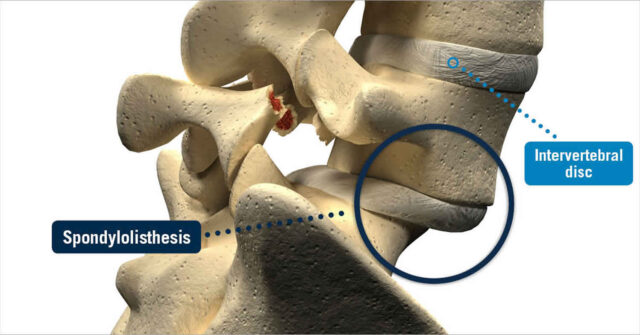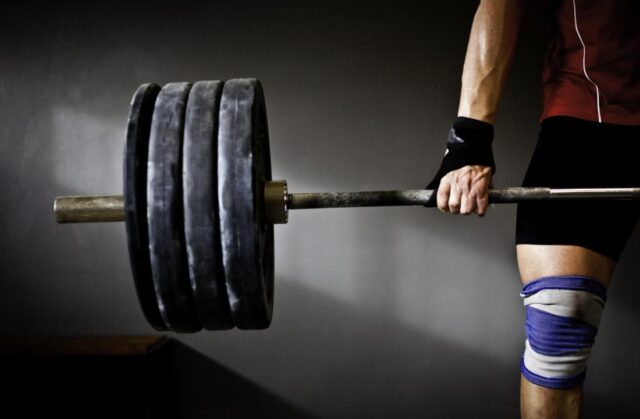
Dealing with any type of injury, disease, or even infection can be difficult. You’ll almost certainly be dealing with pain on a daily basis and have hundreds of questions regarding the treatment plan if you’re going to get better, and whether you can exercise or not.
Exercise is universally recognized as being beneficial to your mind and body. It releases endorphins that act as pain relievers and help you to cope with any issue. It also makes you feel more capable of dealing with difficult situations.
However, if you’re dealing with a condition, such as spondylolisthesis you need professional help from sydneybrainandspine.com and you’ll want to know if exercising is a good idea or not.
What Is Spondylolisthesis?

Your spine is made up of vertebrae, these are separated from each other by soft discs. The vertebrae are the bones that give your spine strength, supporting your head and allowing you to function normally. The soft discs between your spine are tissue and allow the spine to bend, creating the flexibility you need on a daily basis.
When one of the bones moves out of position you have spondylolisthesis. This is not the same as a slipped disc when the soft tissue moves out of place. With spondylolisthesis, your vertebra actually moves. This can cause a variety of problems. The most common symptoms of this condition are as follows. However, it should be noted that many people do not have any symptoms.
- Lower back pain.
Of course, this can be the result of many conditions. In this instance, the lower back pain will be worse when you’re exercising or just standing. Lying down will relieve it.
- Pain, numbness, or tingling down your leg or legs
This is generally referred to as sciatica and is a result of the bone pressing on your nerves.
- Tight hamstrings
- The curvature of your spine
- Tender, or perhaps stiff back
Causes of Spondylolisthesis

One of the most common causes of this issue is actually a birth defect. But, it can also be caused by repetitive trauma. This is when you constantly push the limits of what the bone can do, such as when doing gymnastics or weightlifting.
This causes the defect in the spine.
It’s also caused by age as the joints become worn and arthritic, a bone abnormality, or even a sudden trauma.
If you have persistent pain in your back or your thighs/buttocks you should visit your doctor. This is also true if your back is curving outwards.
There is a range of treatment options including a short period of rest, anti-inflammatory painkillers, corticosteroid injections, physiotherapy, or even surgery.
Your reputable spinal doctor will guide you through the process.
Exercises That Can Help

Exercise can help to eliminate the pain associated with spondylolisthesis and even help your body to heal. The following ones should prove beneficial.
- Dead Bug
Lie on your back and bend your knees while keeping your feet flat on the floor. Then pull in your abdomen and focus on keeping your abdominal muscles tight. Keep your knees bent as you lift one leg off the floor by 2-3 inches and hold it there for 5 seconds. Lower and repeat with the other leg.
If this is easy to do, lift the opposing arm at the same time as your leg, placing it over your head.
- Pelvic Tilt
Again you’ll need to start on your back with your knees bent and feet flat on the floor. This time you need to focus on bringing your belly button into your spine while pushing your lower back into the floor. The aim is to flatten your back and hold the pose for 15 seconds. Ideally, you should repeat this 10 times. If it’s too difficult do as many as you can and work up to it.
- Glute Stretch
While lying on your back with your knees bent keep your feet off the ground. Place your left ankle over the right knee. Then grasp the thigh of your right leg and pull it toward your chest. You’ll feel it stretching your buttocks and hip.
Hold for 20 seconds and then switch legs. Then, repeat 5 times.
- Partial Curl
You’ll want to lie on your back, knees bent, feet flat on the floor! Draw your belly button toward your spine and focus on tightening your core. Then, push your arms out in front of you and curl your body, lifting your shoulders off the floor.
You’re only looking to lift your shoulders. Hold for 15 seconds and return to the start position. You’re aiming to do this 10 times.
Exercises To Avoid

Movement is generally good for you if it doesn’t push your pain threshold too far But, there are a few exercises you should avoid.
- Weightlifting
Weightlifting generally places a strain on your back. This strain is magnified if you’re lifting incorrectly. This is one of the things that can cause you to develop spondylolisthesis.
It is also important to avoid weightlifting while dealing with the issue. It will aggravate the injury and make it worse.
- High Impact Exercises
Impact exercises, such as running, basketball, and even football, should be avoided. The impact will vibrate through your body and is likely to worsen the condition in your spine.
It will take you longer to heal and may prevent t from every healing properly.
- Bending & Twisting putting weight forward
Bending and twisting should be avoided, especially if it shifts your bodyweight forward. This doesn’t just mean organizing your effort. Various exercises involve twisting and bending, such as golf. You’re going to need to stop doing these for the short term.
Focusing on dealing with the issue and managing the pain will allow you to continue living a healthy life. That’s why it’s essential that you speak to a good spinal doctor and follow their advice. They will help you deal with the issue and locate the best solution for your situation.








